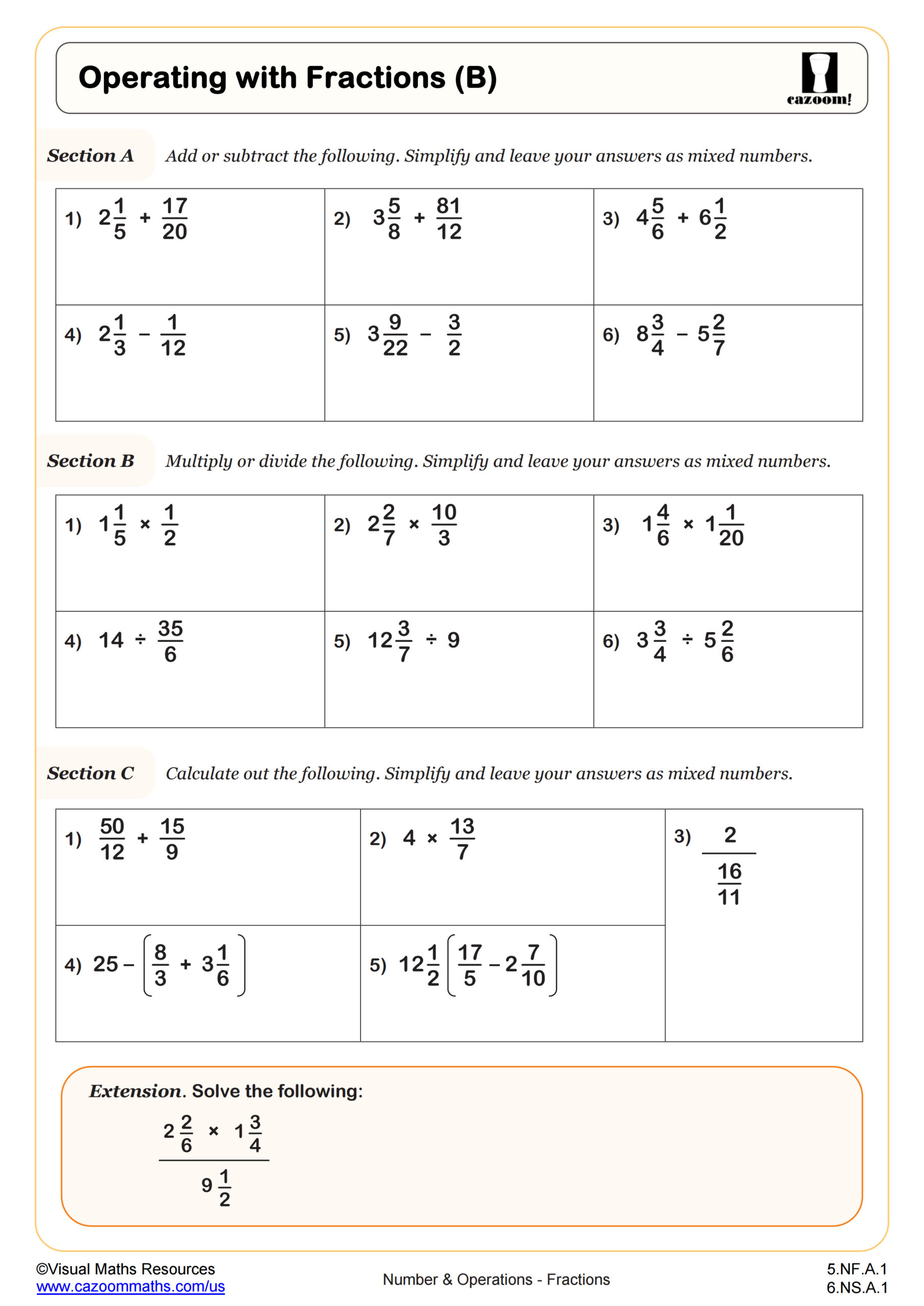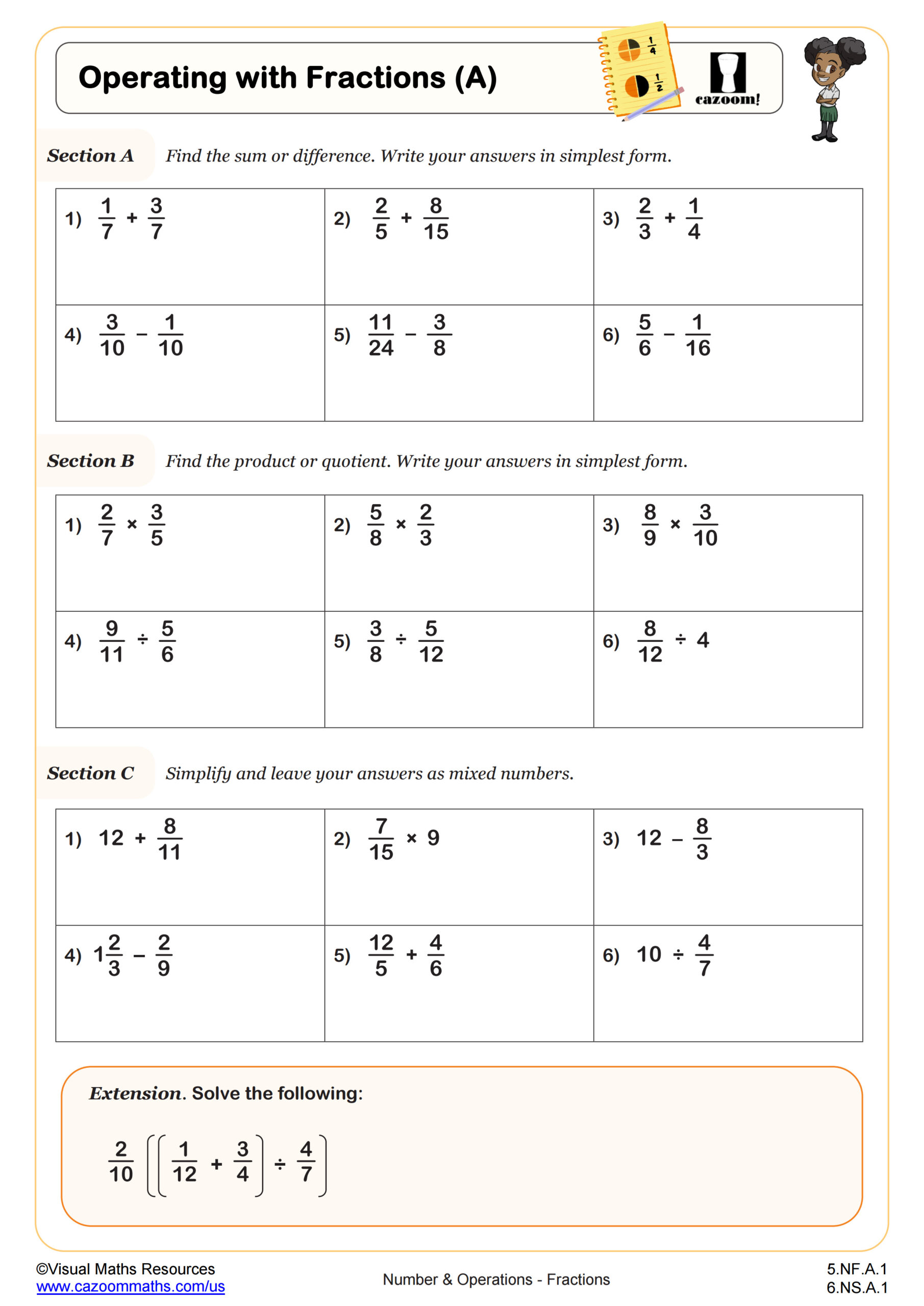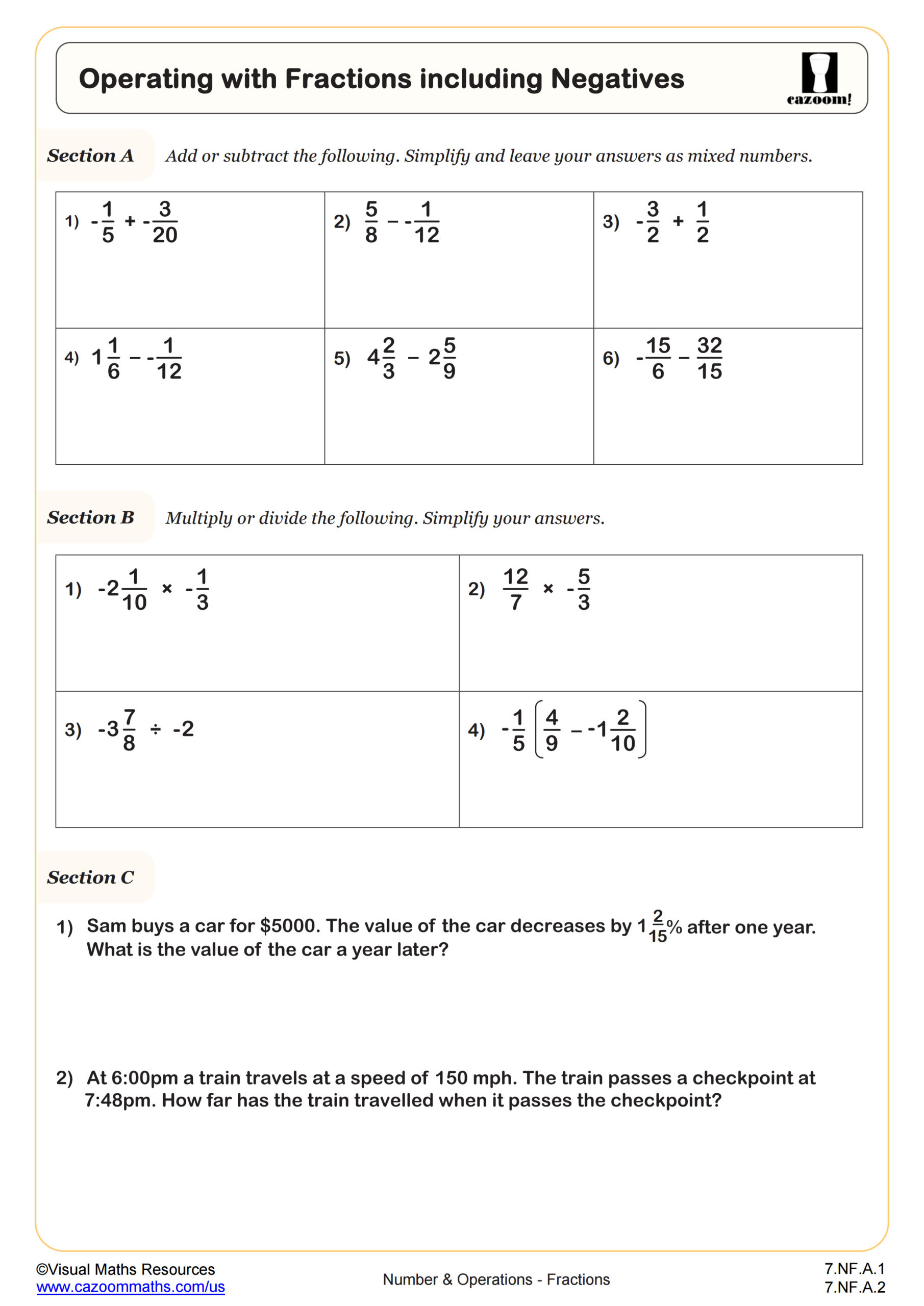Loading...
Back to:
Operations with Fractions (B) WORKSHEET
Suitable for Grades: 5th Grade, 6th Grade
CCSS: 5.NF.A.1, 6.NS.A.1
CCSS Description: CCSS Description: Add and subtract fractions with unlike denominators (including mixed numbers) by replacing given fractions with equivalent fractions in such a way as to produce an equivalent sum or difference of fractions with like denominators. For example, 2/3 + 5/4 = 8/12 + 15/12 = 23/12.(In general, a/b + c/d = (ad + bc)/bd.)
Interpret and compute quotients of fractions, and solve word problems involving division of fractions by fractions, e.g., by using visual fraction models and equations to represent the problem. For example, create a story context for (2/3) ÷ (3/4) and use a visual fraction model to show the quotient; use the relationship between multiplication and division to explain that (2/3) ÷ (3/4) = 8/9 because 3/4 of 8/9 is 2/3. (In general, (a/b) ÷ (c/d) = ad/bc.) How much chocolate will each person get if 3 people share 1/2 lb of chocolate equally? How many 3/4-cup servings are in 2/3 of a cup of yogurt? How wide is a rectangular strip of land with length 3/4 mi and area 1/2 square mi?
Interpret and compute quotients of fractions, and solve word problems involving division of fractions by fractions, e.g., by using visual fraction models and equations to represent the problem. For example, create a story context for (2/3) ÷ (3/4) and use a visual fraction model to show the quotient; use the relationship between multiplication and division to explain that (2/3) ÷ (3/4) = 8/9 because 3/4 of 8/9 is 2/3. (In general, (a/b) ÷ (c/d) = ad/bc.) How much chocolate will each person get if 3 people share 1/2 lb of chocolate equally? How many 3/4-cup servings are in 2/3 of a cup of yogurt? How wide is a rectangular strip of land with length 3/4 mi and area 1/2 square mi?
Operations with Fractions (B) WORKSHEET DESCRIPTION
Operating with Fractions B is perfect for students in need of a recap of the four operations with fractions. Most of the fractions are improper and written as mixed numbers.
This worksheet begins in section A with 6 addition and subtraction problems. Multiplication and division are visited in section B. This includes division of and by an integer.
Section C contains a mixture of all four operations with improper fractions, mixed numbers and integers, thus ensuring your learners are competent at choosing the correct method and do not make mistakes such as finding a common denominator before multiplying fractions.
We conclude with a tricky extension question which will challenge even your most capable students.




